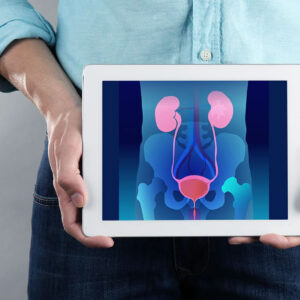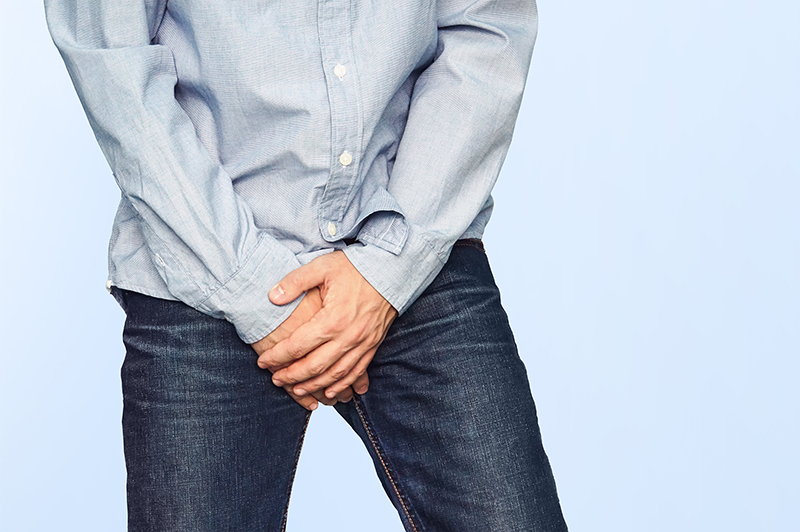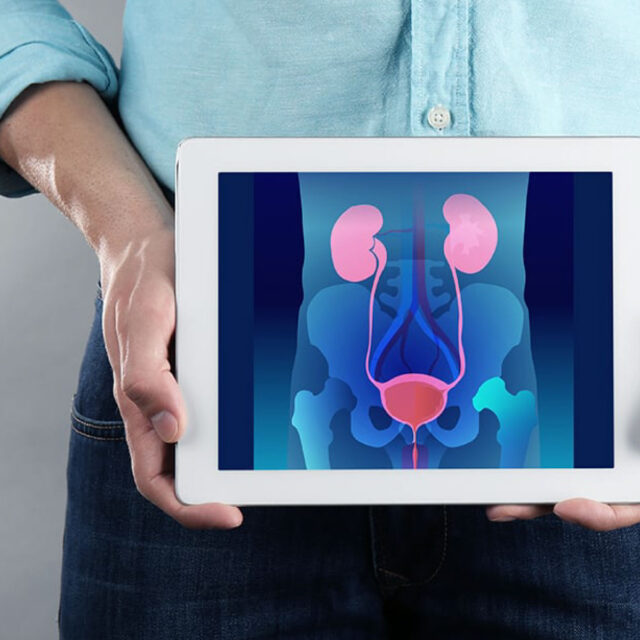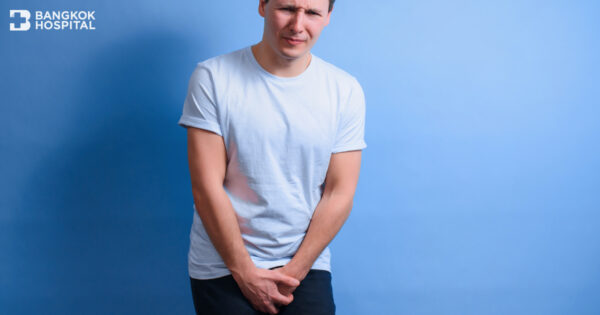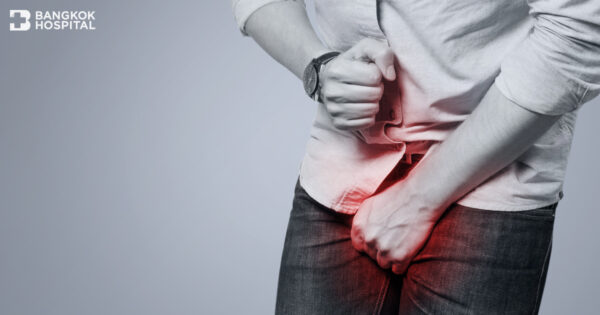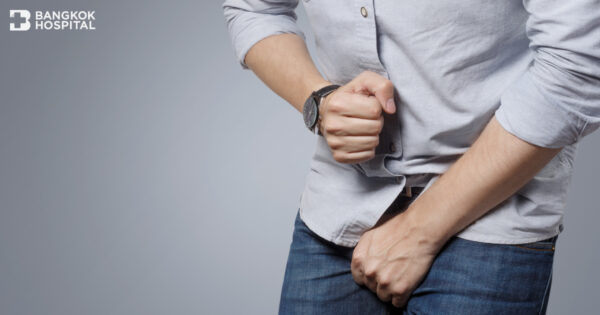Urinary abnormalities such as frequent urination and feeling a sudden urge to urinate might be frequently overlooked. In fact, these symptoms potentially indicate overactive bladder or OAB. Overactive bladder is a chronic medical condition which has tremendous impacts on the quality of life in both men and women. Overactive bladder affects performance of daily activities and social function such as work, traveling, physical exercise, sleep and sexual function. If this condition is left untreated, it leads to impaired quality of life accompanied by emotional distress and depression.
Get to know overactive bladder
Overactive bladder causes a frequent and sudden urge to urinate that may be difficult to control. The definite causes of overactive bladder remain unknown. Overactive bladder occurs when the muscles of the bladder start to contract involuntarily even though the volume of urine in the bladder is low. These involuntary muscle contractions produce an urgent need to urinate. Symptoms include a frequent urge to urinate and waking up at night to urinate regardless of the amount of water intake. As a result, overactive bladder significantly impairs self-confidence, increases risk of depression and other psychological effects as well as induces sleep disturbance, leading to decreased quality of life. Overactive bladder has been commonly found in women than men, aged 30-40. In fact, the prevalence of overactive bladder collectively increases with age where the highest prevalence is found in people aged over 50. Several conditions may contribute to signs and symptoms of overactive bladder, including neurological disorders such as stroke, diabetes, hormonal changes during menopause in women, abnormalities in the bladder, such as tumors or bladder stones and factors that obstruct bladder outflow. Other possible risk factors may include certain medications, excessive consumption of caffeine and alcohol and declining cognitive function.
Symptoms of overactive bladder
Symptoms that indicate overactive bladder include:
- Frequent urination, at least seven or more times during daytime and two times at night (nocturia)
- Feel a sudden urge to urinate that is difficult to control. Experience unintentional loss of urine immediately after an urgent need to urinate (urgency incontinence)
Diagnosis of overactive bladder
To thoroughly diagnose overactive bladders, tests should be conducted by highly expert urologists. Diagnostic tests include medical history, physical exam, which may include a rectal exam and a pelvic exam in women, urine sample to test for infection or other abnormalities and focused neurological exam that may identify sensory problems or abnormal reflexes. Overactive bladder assessments include:
- Frequency and quantity of urination in each day starting from morning time after waking up and before going to sleep at night
- Frequency and quantity of urination during nighttime starting from sleep at time to morning time.
- Number of urination with inability to hold the urine
- Number of urination with a sudden urge to urinate and that is difficult to control
In addition, tests might also involve measuring urine left in the bladder, measuring urine flow rate and testing bladder pressure. Individual patients might need different tests and procedures depending on their medical conditions and personal factors.
Treatment of overactive bladder
Overactive bladder is a chronic medical condition that requires continuous treatments. There are several treatment options to treat overactive bladder. Nonetheless, the selected treatment option is primarily determined by patient’s symptoms, disease severity and complications as well as underlying conditions. Treatments include:
Behavioral therapies
Behavioral interventions are the first choice in helping manage an overactive bladder. These lifestyle changes are often effective and they carry no side effects. Behavioral interventions may include:
- Taking voiding chart or bladder diary regularly. The amount of water intake each time and the amount of urine output each time should be recorded on the chart throughout 24 hours in a day.
- Restricting water intake at least 2 hours before going to sleep at nighttime in order to avoid urination at night while sleeping
- Avoiding all beverages that induce frequent urination such as caffeine, tea, coffee, soft drinks and alcohol
- In case that diuretic drugs are prescribed, adjustment of dosage regimen might be additionally required
- Bladder training. Bladder training involves training bladder to delay voiding when feeling an urge to urinate. Patients might begin with small delays, such as 30 minutes and gradually work the way up to urinating every three to four hours. Bladder training is possible only if patients are able to tighten or contract pelvic floor muscles successfully.
Medications
Medications that relax the bladder can be helpful for relieving symptoms of overactive bladder and reducing episodes of urge incontinence. These drugs can also increase bladder capacity, thus reducing the frequency of urination. Medications must be strictly taken under supervision of the specialists while behavioral therapies must be collectively maintained. In addition, these medicines may cause fewer minor side effects.
Bladder injections
Botox or onabotulinumtoxinA is a protein from the bacteria that cause botulism illness. Used in small doses directly injected into bladder tissues, this protein relaxes the muscles. Clinical studies show that it may be useful for severe urge incontinence in patients who failed to previous medication treatment. The temporary effects generally last six months or longer. However, repeat injections are necessary. Side effects from these injections include urinary tract infections and urinary retention. If considering Botox treatments, intermittent self-catheterization might be needed if urinary retention occurs.
Nerve stimulation
Nerve stimulation regulates the nerve impulses to the bladder, resulting in improved overactive bladder symptoms. One procedure uses a thin wire placed close to the sacral nerves which carry signals to the bladder where they pass near the tailbone. This minimally invasive procedure is often performed by using a trial of a temporary wire implanted under the skin in the lower back. Sometimes this may be performed as an advanced procedure in which the permanent electrode is implanted and a longer trial is conducted. The urologist then uses a hand-held device connected to the wire to deliver electrical impulses to the bladder, similar to what a pacemaker does for the heart. If it helps with symptoms, a permanent, battery-powered pulse generator is surgically implanted to help regulate the nerve rhythm. However, this procedure must be done by highly experienced urologists in order to ensure both effectiveness and safety.
Surgery
Surgery to treat overactive bladder is reserved for patients with severe symptoms who do not respond to other treatments. The goal is to improve the bladder’s ability to store urine and reduce pressure in the bladder. However, these procedures do not help relieve bladder pain. The procedure mainly involves surgery to increase bladder capacity. This procedure uses pieces of the bowel to replace a portion of the bladder. This surgery is used only in cases of severe urge incontinence that does not respond to any other, more-conservative treatment measures. Moreover, this procedure can cause postoperative complications such as weak urine stream, urinary retention, urinary precipitation and urinary tract infection as well as kidney stones. If this surgery is indicated, it must be advised and performed by expert specialists.
Although overactive bladder does not cause serious health-related problems, it largely disturbs quality of life including emotional distress and sexual ability in the long run. If warning symptoms present, medical assistance must be sought as soon as possible.


